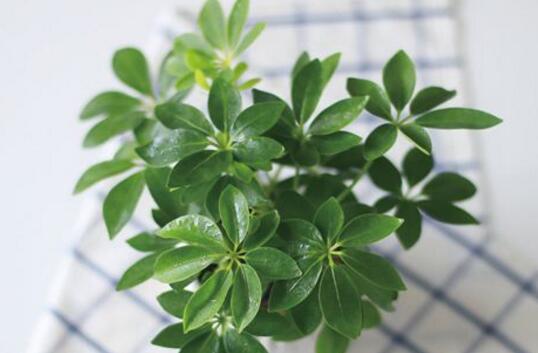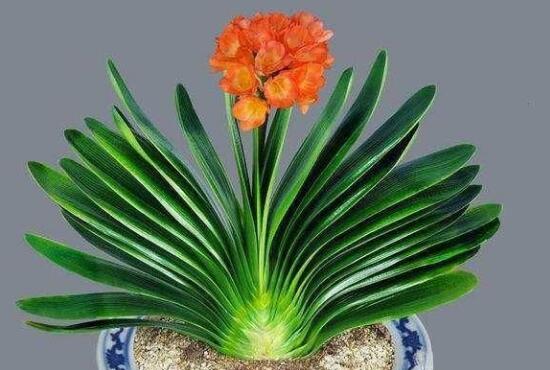How to do the long spots of Cymbidium, spraying chemicals to change the basin soil / reasonable fertilization is the key.
Clivia's role, raised people should have a deep understanding, it leaves plump green very ornamental, but also a good feng shui role, very suitable for raising indoors. However, in the breeding process, because of some reasons, the plant leaves will grow spots, then what about Clivia long spots? In this regard, Xiaobian summarized the reasons for 5 kinds of leaf spots, together to understand and see.
How to find the cause?

As a valuable flower, Clivia is generally decorated in the living room, study and other places for people to appreciate. However, in the process of cultivation, yellow or brown dots will appear on the leaves of some flower friends, and then fester one by one, and finally the leaves or whole plants of Clivia will rot. So what about clivia long spots? Xiao Bian will solve problems for everyone from water and fertilizer, light, soil and other aspects.
Second, the cause of Clivia long spots
1) Too much water.
Clivia long spot on the reasons, in general, there are many, first of all, we can check the flowerpot to see if it is watered more. Because once too much watering, pot soil appears ponding words, it is easy to lead to Clivia rotten roots, performance in the above is leaf long spots. At this point, everyone can consider changing the basin soil.
2, improper lighting
Clivia likes light, but avoid direct light, once the plant is direct light for a long time, or long-term do not receive light, there will be long spots on the leaves. At this time, everyone should put potted flowers in the setting sun.
3. Excessive fertilization
In the process of Clivia growth, appropriate fertilization can make the plant grow better, but once too much fertilization, it will lead to Clivia long spots. In this case, we also need to change the basin soil for it.
4, nitrogen, phosphorus, potassium imbalance
Too much fertilizer is no good, too little fertilizer is no good. Once nitrogen, phosphorus, potassium imbalance, especially less potassium fertilizer, or fertilizer direct contact with the roots, individual leaves will also grow spots.
5. Improper soil replacement
In addition to the above points, clivia long spots may also be caused by improper soil change. Pot soil long-term change, pot soil nutrients reduced, and the existence of pathogenic bacteria, at this time once the plant wound, it is easy to infect bacteria disease, the result is leaf long spots; in addition, the replacement of new soil improper, containing bacteria, or the soil is relatively raw, will also lead to leaf long spots.
3. Solution to Clivia Long Spot
1, pruning
Knowing the reason for Clivia long spots, the next step is to solve it. First of all, we have to cut off the diseased old leaves and leave the young leaves in the middle, because the diseased leaves not only affect the growth of other healthy leaves but also affect the beauty of the whole flower plant.
2. Change soil
To solve the clivia leaves long spots, you can use the soil change method to solve. When changing soil, wash the fleshy roots with clean water, dry them and then put them in the basin. If some of the leaves are rotten, cut them off.
3. Spray
If it is a long leaf spot caused by the disease, you can spray 500-1000 times of bacteria, spray once every half month, spray 3~4 times continuously to get effect. However, bacteria have special toxicity, so everyone should pay attention to safety when using them.
What about the brown spots on the clivia leaves?
Clivia leaf spot disease is a small yellow spot on the leaves, the spot increases, the diameter can reach 3? 5 mm or so, round; the disease spots spread into a piece, the leaves will be yellow. The other is large, irregular, yellow-brown to gray-brown, slightly ringed, black spots appear on the back of the late lesions. What about the brown spots on the clivia leaves? What if there are spots in Clivia? The following wed114 wedding network Xiaobian brings you detailed content.
What about the brown spots on the leaves?
Clivia leaves on the long spots are generally caused by leaf spot disease, the main reasons are as follows:
improper fertilization
The application of unfermented fertilizer causes the bacteria to multiply in large quantities in the pot soil.
improper soil replacement
The pot soil is not changed for a long time, the nutrients in the pot soil are reduced, and there are pathogenic bacteria. If the plant has a wound, it is easy to get infected with bacteria. In addition, the new soil replaced is improper, contains germs, or the soil is relatively raw.
Fertilizer nitrogen, phosphorus, potassium imbalance
Especially less potassium fertilizer or fertilizer direct contact with the roots caused by makeup. Rusty spots on individual leaves are often caused by direct contact of fertilizer with a fleshy root or contact with wounds.
What if there are spots on the clivia?
do preventive
First of all, it is necessary to prevent the rotten roots of plants, so that the leaves can get sufficient nutrition, and then to put an end to trauma, prevent the spread of wounds, the amount of fertilizer applied must be controlled well, avoid hypertrophy, do not water the adult flowers in summer to the false bulbs, pay attention to ventilation in summer, cool down, strengthen management, regularly spray carbendazim, chlorothalonil, methyl toph, agricultural streptomycin and other sterilization drugs for prevention and control, that is, to reduce and eliminate leaf spot disease, leaf yellow disease occurrence.
replacement of new soil
The leaf spot disease can be controlled by changing soil. When changing the soil, wash the fleshy roots with clean water, dry them and then put them in the basin. If some of the leaves are rotten, cut them off.
spraying
Junte is an organic-sulfur-arsenic-compound fungicide, which can control many kinds of rice diseases, such as white rot, brown spot, stem spot, etc. Use a concentration of 500~1000 times, spray once every half month, spray 3~4 times continuously to collect the effect. Tuijunte has toxicity, pay attention to safety when using it.
What do you think of the long leaves?
The reason for the long spots of Clivia leaves
Clivia leaves on the long spots are generally caused by leaf spot disease, the main reasons are as follows:
improper fertilization
The application of unfermented fertilizer causes the bacteria to multiply in large quantities in the pot soil.
improper soil replacement
The pot soil is not changed for a long time, the nutrients in the pot soil are reduced, and there are pathogenic bacteria. If the plant has a wound, it is easy to get infected with bacteria. In addition, the new soil replaced is improper, contains germs, or the soil is relatively raw.
Fertilizer nitrogen, phosphorus, potassium imbalance
Especially less potassium fertilizer or fertilizer direct contact with the roots caused by makeup. Rusty spots on individual leaves are often caused by direct contact of fertilizer with a fleshy root or contact with wounds.
The solution to the problem is to prevent it.
First of all, it is necessary to prevent the rotten roots of plants, so that the leaves can get sufficient nutrition, and then to put an end to trauma, prevent the spread of wounds, the amount of fertilizer applied must be controlled well, avoid hypertrophy, do not water the adult flowers in summer to the false bulbs, pay attention to ventilation in summer, cool down, strengthen management, regularly spray carbendazim, chlorothalonil, methyl toph, agricultural streptomycin and other sterilization drugs for prevention and control, that is, to reduce and eliminate leaf spot disease, leaf yellow disease occurrence.
replacement of new soil
The leaf spot disease can be controlled by changing soil. When changing the soil, wash the fleshy roots with clean water, dry them and then put them in the basin. If some of the leaves are rotten, cut them off.
spraying
Junte is an organic-sulfur-arsenic-compound fungicide, which can control many kinds of rice diseases, such as white rot, brown spot, stem spot, etc. Use a concentration of 500~1000 times, spray once every half month, spray 3~4 times continuously to collect the effect. Tuijunte has toxicity, pay attention to safety when using it.
- Prev

How to trim and shape the duck foot wood, coring / thinning / truncation / fixing / styling
Duck foot wood can be planted for many years and evergreen, and its growth rate is fast, so when raising it, flower friends often encounter the disorderly growth of branches and leaves, which is not good-looking but also affects the development of new leaves. The solution is pruning.
- Next

How to fertilize the orchid, how to fertilize the magnolia, how to fertilize the magnolia, how to fertilize the orchid, how to fertilize the magnolia, how to fertilize the orchid.
As the saying goes, a good crop with a flower depends entirely on fertilizer. If you want a gentleman's orchid to grow well, fertilization is very important. In life, there are many flower friends who raise magnolia, and many of them watered it a lot of things, including eggs, in order to grow better. It is said that Cymbidium grows rapidly with eggs for fertilization.
Related
- Fuxing push coffee new agricultural production and marketing class: lack of small-scale processing plants
- Jujube rice field leisure farm deep ploughing Yilan for five years to create a space for organic food and play
- Nongyu Farm-A trial of organic papaya for brave women with advanced technology
- Four points for attention in the prevention and control of diseases and insect pests of edible fungi
- How to add nutrient solution to Edible Fungi
- Is there any good way to control edible fungus mites?
- Open Inoculation Technology of Edible Fungi
- Is there any clever way to use fertilizer for edible fungus in winter?
- What agents are used to kill the pathogens of edible fungi in the mushroom shed?
- Rapid drying of Edible Fungi

